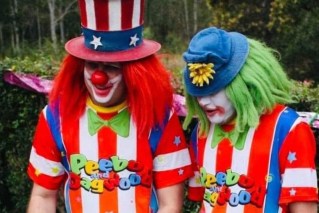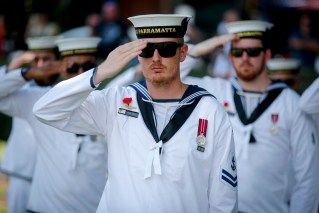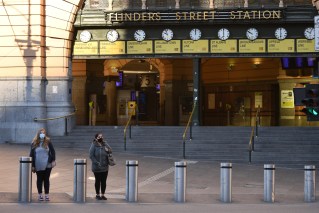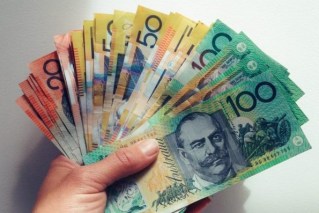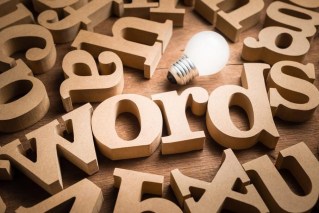Confessions from the cathedral in the pines (and Amen Corner, of course)
It’s called the Cathedral in the Pines – the most holy place for golf tragics. With the US Masters returning next week, Michael Blucher shares the wonders of Augusta National.

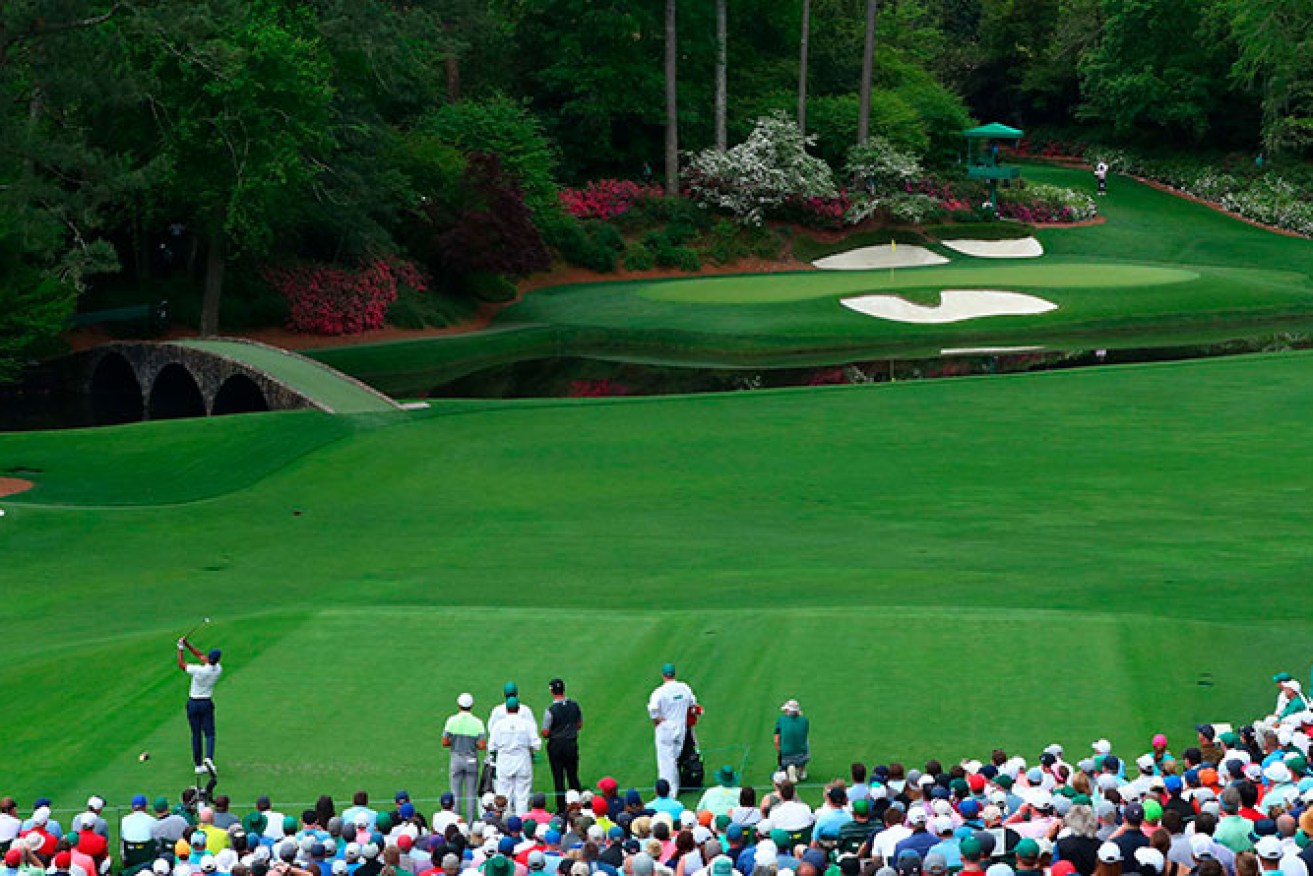
Augusta National's par-three 12th - where Jordan Spieth came to grief.
WARNING: Golf Nuffie Alert. The following 1659 words will be of no interest – zilch, nada – to anybody who doesn’t absolutely cherish the game of golf.
If that’s you, please move on. Nothing to see here folks. Nothing worth reading. Even more than normal.
The rest of you – the other five – bring it in tight. We’re talking Masters golf.
I ask you, kindred spirits, are there four days of the year more eagerly anticipated? That moment the telecast starts – the gentle tinkling of ivories, as the camera pans out around the lush surrounds of Augusta National, to the white clubhouse, the vibrant azalea bushes and the towering pines. Then rhythmically, the syrupy voice of Jim Nance takes over. “Springtime in Augusta..” It’s a religious experience. (non-denominational, of course – Golf is a broad church. )
Like all golf nuffies, I’ve been obsessed with The Masters for years. Thirty-four to be precise. April 1986. I remember it like yesterday, getting up at 5am to watch The Shark win his first major. At Augusta, of all places. How special. Of course it didn’t happen. Jack, The Golden Bear, charged on the back nine on Sunday, winning his sixth Masters at an age nobody thought was possible. Not even Jack.
I remember in pure frustration, my flatmate and I hitting seven irons off the balcony of our third-floor apartment at Auchenflower. The Red-Haired Romeo got one a little thin, the ball ricocheted off the railing, into the kitchen, and smashed the coffee pot. It was that kind of morning.
Next year, it was Larry Mize who denied The Shark what was rightfully his – a measly green jacket. Larry Mize? Puullleeeeeasse. A four-cylinder golfing sedan if there were ever was one, up against a Ferrari. Golf is not fair. Life is not fair. More seven irons off the balcony.
And so it went, year after year, near miss after near miss. Until 1996 when surely the Shark couldn’t mess it up? But again, fate intervened. No seven irons that year – we’d long since been evicted.
Despite all the pain and suffering this mythical looking place had caused over the years, it became my life mission to one day get there myself, to stroll the lush fairways, to walk among the towering pines, and hear the cacophonous roar of the fans – sorry, patrons – that packed into Amen Corner.
That urge intensified in 2013 when Adam Scott finally wrestled the Masters monkey off the back of Australian golf, outlasting gracious Argentinian Angel Cabrera in a playoff to win “our” first green jacket.
When I say Adam Scott, it was really caddie Steve Williams who won, with a bit of help from Adam. I thought Steve was phenomenal that week, as from all reports, did Steve. But that’s an aside.
Finally in 2016, I make it to Augusta. I’m can’t believe it. I’m actually standing outside the gates of Augusta National. Granted, it would have been better if I had a ticket to get in, but small steps. As they say, fortune, favours the brave. Much better chance I’d find one there than in the Queen Street Mall.
The first day I’m there, a scalper in Washington Road waved a Masters “pass” in front of me – $US1200 for the Tuesday practice round. It was a good banker, but I declined. The people I were staying with – let’s call them my very generous ”sponsors” – thought I was foolish – it might be your only chance, they said. “Somebody offered Henrick Stenson $30,000 for one of his four day passes,” one generous “sponsor” chimed in.
I won’t bore you with the what, the how, and the how much – it’s unlikely you’d believe the story anyway – but I did get inside the gates of Augusta. On all four days of the tournament.
At the risk of making you sick, I also met Jordan Speith and Augusta Chairman Billy Paine and sat beside women’s world No.1 Lydia Ko at a dinner at the Savannah Country Club. Lydia explained she was going to sleep at the Atlanta airport that night to make sure she didn’t miss her very early flight the next day. Jordan, at the time, the men’s World No.1, travels by private jet. Interesting.
Anyway back to the course. Augusta National, as anybody who has been there knows, is everything you could possibly imagine, plus a whole bunch of things you simply couldn’t.
The place is picture book – absolutely immaculate. Leaves don’t last on tee boxes any more than two minutes. They fall, and somebody picks them up. The fairways are extraordinary. As my mate Roy observed on his first outing – “Just look at that grass will you? I’ve eaten dinner off worse!”
We shouldn’t be surprised. Augusta has 40 full time greenkeepers and 40 full time horticulturalists keeping the property pristine. Precisely 300mm under every green, there are high compression pipes, feeding the grass hot or cold water or air – whatever’s required. They can make the grass grow faster, slow the process down, or dry the greens out all together. It just depends what the Chairman of the Greens Committee requires from his 80 or so direct reports.
Given the grandeur and the opulence of Augusta National, it would logical to assume the overall mood of the place would be very snooty, or at least austere.
It’s exactly the opposite.
Augusta is like a giant playground filled with deliriously happy children. It’s perhaps the only place in the western world where you have 50,000 people clustered together, and there there’s not a mobile phone among them. Phones are not allowed on the course. So instead of looking at screens and sending texts and being permanently distracted, for six to eight hours, people are in “the now”. They all converse. What’s he got here? Did you see what happened to Jordan at 12? What was Sergio thinking? No pushing, no shoving, and certainly no running. At Augusta, everybody must take their time.
In among all the other peculiarities of the place, the merchandise “store”. Probably the only retail outlet in the world where the women are waiting outside for the men. And then they appear with their bags. And bags. The average spend per merchandise hunter at Augusta is $US750.
A prime item of purchase, the special Masters green chair. Buy one and when the gates open, go and plonk it down beside a green somewhere. That’s your spot for the day No-one will take the chair, or even sit on it.
On Sunday I perched my chair at the back of the 2nd green, a notoriously popular spot. Beside me, a little old bloke whose true age was concealed by his light brown hat and sunglasses, but guessed he was closer to 90 than 80. I introduced myself to ”Phillip”. Phillip had been coming to the Masters since 1961 – 55 years.
He announced he was off to the nearest concession stand to get a bottle of water. “I’ll get it for you,” I volunteered. “Well actually, I have to do a Number 2, as well,” he confided. Sorry Phillip. I can’t help you with that. See you get back.
About 30 minutes later – 90 was a better guess than 80 – I asked Phillip about his Masters experiences.
He couldn’t remember what he paid for his first tickets. Two dollars? Maybe it was $5 for the week. But it was at a time nobody was really that interested. The organisers appreciated the early show of faith, and hence Phillip was added to “the list”. Every year, he receives his tickets in the mail. 2016 was the first year he’d come without May, his wife of 60 years. She passed away in December. I told him I was very sorry to hear that. He smiled a sad smile.
As a distraction, I asked Phillip about how much the course had changed over the years. The biggest difference, he said, was the car park. A number of years ago, Augusta National had spent in the vicinity of $100 million buying the 400-odd houses that occupied the land to the immediate north of the course. To build a car park that patrons parked in for free – there’s an interesting business case study.
For a few years, his friend William Hatcher lived in the one remaining house – he refused to budge. “How long are you going to hold out,” Phillip asked him one year, cognizant of the fact that for two weeks of the year, his friend lived in the middle of a giant car park. “I’m going to stay,” he said stoically. “It’s not about the money.”
Well, it wasn’t. But eventually, the offer simply became too good to refuse. William Hatcher packed up his goods and chattels, and Augusta had room for a few more cars.
There’s a lot of money inside the gates of Augusta National. From the stories that float around, you sense the committee has to come up with inventive ways, just to get rid of it.
As the last group, Smylie Kaufman and (my close mate) Jordan putted out on the second green, I said goodbye to Phillip, leaving my chair to collect at the end of the day. He too was packing up – going home to watch the rest of the tournament on TV. That’s what he and May had done every Masters Sunday for the past 30 years.
There are lots of traditions at Augusta, small and large.
The record books show that Englishman Danny Willett won that year, but 2016 is probably better remembered for Jordan Speith surrendering a huge lead by chunking two into Rae’s creek at the 12th.
My good mate Jordan. What was he thinking?
This year of course the Masters will be played for the first time in November, The weather will be much colder, and the flowers of spring, missing.
It might be a little different, but it will be the same.
The Masters will be compelling viewing.
BTW, did I mention I caught an Uber down Magnolia Lane?
Another Masters story for another day.

